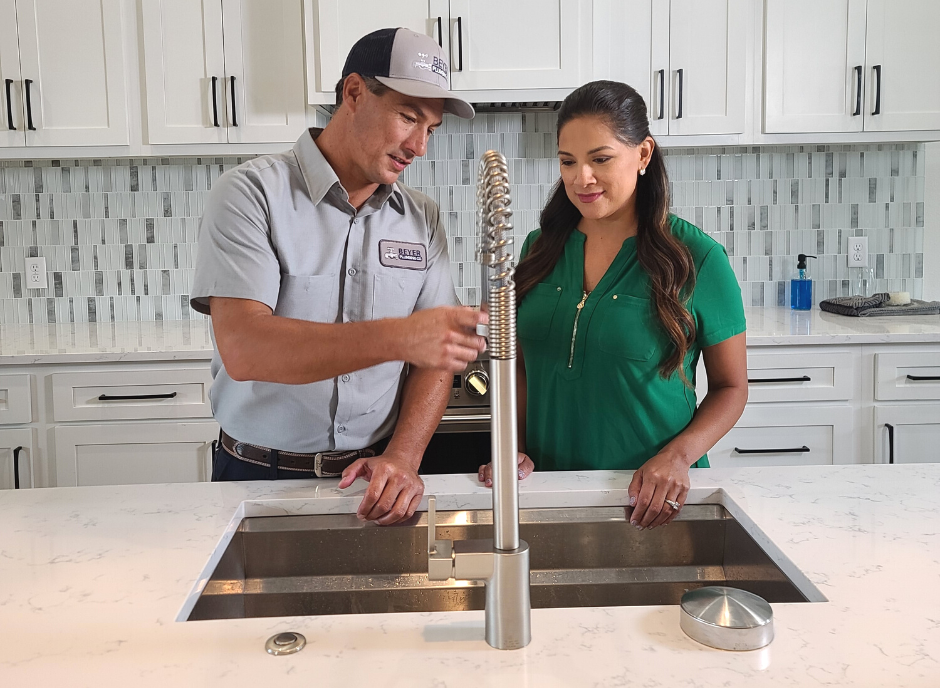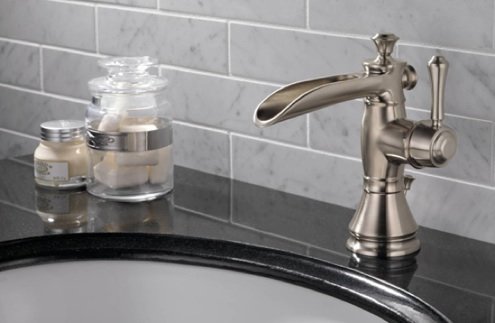Presented here in the next paragraphs yow will discover a lot of professional tips involving Why Is It Important To Fix Your Leaking Tap/Faucet?.

Trickling faucets may feel like a minor trouble, yet their impact exceeds simply the annoyance of the audio. From drainage to incurring unnecessary monetary expenses and wellness threats, ignoring a leaking tap can cause numerous effects. In this article, we'll explore why it's vital to resolve this typical family problem immediately and successfully.
Waste of Water
Environmental Effect
Dripping faucets add dramatically to water wastefulness. According to the Epa (EPA), a solitary faucet dripping at one drip per secondly can throw away greater than 3,000 gallons of water annually. This not only pressures water resources but additionally impacts communities and wildlife depending on them.
Financial Expenses
Increased Water Costs
Beyond the ecological impact, trickling faucets can blow up water expenses considerably. The built up wastage over time converts into higher energy expenses, which might have been stayed clear of with timely fixings.
Potential Residential Property Damages
Furthermore, extended leaking can result in harm to fixtures and surfaces bordering the tap. Water accumulation can cause staining, rust, and also structural problems if left neglected, causing additional repair costs.
Health and wellness Issues
Mold And Mildew and Mold Development
The consistent visibility of dampness from a leaking tap produces an optimal atmosphere for mold and mildew development. These fungis not just jeopardize interior air high quality however also pose wellness dangers, especially for individuals with respiratory system problems or allergies.
Waterborne Conditions
Stationary water in dripping taps can end up being a breeding place for germs and various other microorganisms, increasing the threat of waterborne diseases. Impurities such as Legionella germs grow in stagnant water, possibly resulting in significant diseases when consumed or inhaled.
DIY vs. Expert Repair
Advantages and disadvantages of Do It Yourself Repair Work
While some might try to fix a leaking tap themselves, do it yourself repairs come with their own collection of obstacles. Without appropriate expertise and devices, do it yourself attempts can exacerbate the issue or result in insufficient repair services, lengthening the trouble.
Advantages of Working With a Specialist Plumber
Working with a specialist plumber makes sure that the underlying reason for the dripping faucet is addressed properly. Plumbing professionals have the know-how and devices to identify and repair tap problems efficiently, conserving time and decreasing the danger of additional damage.
Step-by-Step Overview to Taking Care Of a Dripping Faucet
Devices Needed
Prior to trying to repair a trickling faucet, collect the required devices, consisting of a flexible wrench, screwdrivers, substitute parts (such as washing machines or cartridges), and plumber's tape.
Usual Tap Issues and Their Solutions
Recognize the sort of tap and the particular problem triggering the drip. Usual troubles consist of damaged washing machines, rusty shutoff seats, or faulty O-rings. Refer to supplier instructions or on-line tutorials for detailed support on fixings.
Safety nets
Routine Maintenance Tips
To prevent dripping taps, execute regular upkeep such as cleaning up aerators, examining for leakages, and changing worn-out components immediately. Furthermore, consider installing water-saving tools or updating to more reliable fixtures.
Relevance of Prompt Repair Works
Addressing leaking taps as soon as they're noticed protects against additional water wastefulness and prospective damages, ultimately saving both water and cash over time.
Influence On Property Value
Perception of Well-Maintained Building
Maintaining a home in good condition, including resolving maintenance problems like trickling faucets, enhances its viewed value and charm amongst potential customers or renters.
Impact on Resale Value
Characteristics with well-maintained plumbing fixtures, consisting of faucets, command higher resale worths in the real estate market. Attending to dripping faucets can add to a positive perception throughout residential or commercial property examinations and arrangements.
Ecological Obligation
Specific Payment to Conservation
Taking responsibility for dealing with dripping faucets straightens with broader efforts towards water preservation and ecological sustainability. Every individual's actions collectively make a substantial effect on protecting priceless resources.
Sustainable Living Practices
By prioritizing timely fixings and adopting water-saving practices, individuals contribute to lasting living methods that profit both present and future generations.
Conclusion
Dealing with a leaking faucet exceeds mere convenience; it's a necessary action towards preserving water, lowering economic expenses, and protecting health and home. Whether with DIY fixings or specialist support, acting to fix trickling faucets is a small yet impactful means to advertise accountable stewardship of sources and add to a healthier, more lasting future.
How to Fix a Dripping or Leaky Faucet
A leaking faucet is one of the most common problems that homeowners encounter, but it being commonplace doesn’t make it any less annoying. The constant drip drip drip of a leaking bathtub faucet, showerhead, or sink tap can disturb your home’s serenity. Left neglected, a dripping faucet can also result in higher water bills and discoloration or mold growth in your sink or plumbing fixtures.
Fortunately, you don’t have to be a trained plumber to know how to stop a dripping faucet. With some basic tools, replacement parts, and a little patience, leaky faucet repair is a breeze. In this article, we’ll explain what causes dripping faucets and how you can fix them.
What Causes a Leaking Faucet?
Kitchen and bathroom faucets come in all manner of designs, but most involve some combination of valves, O-rings, seals, and washers. The O-ring is usually the weakest link, but any one of these pieces can wear down over time. Heat, moisture, temperature fluctuations, minerals, mold, and movement can contribute to warping and corrosion, breaking the watertight seal. This just comes with the territory of being a homeowner. Everything is always subject to wear and tear, and some component parts of your appliances and fixtures need to be replaced on occasion. At least replacement O-rings are cheap!
More rarely, dripping faucets can be a symptom of excessively high water pressure. Were this the case in your home, you would probably notice that the leak is not isolated to one faucet. Water pressure issues are harder to resolve on your own. We recommend contacting a professional plumber if you suspect your water pressure is too high.
How to Fix a Dripping Faucet
Pipe wrench or monkey wrench Allen wrench set Screwdrivers Old towel or rag Shut off the water.
Before you do anything, you need to turn off the water to keep from drenching your kitchen or bathroom. You should find a valve under the sink and against the wall. Once you’ve turned this valve, try turning the faucet on to confirm that the water source has been cut off.
If you can’t locate your local valve for the faucet you’re working on, you can always shut off the water to the house at the main valve. Of course, this will prohibit anyone from using the sinks, showers, or toilets while you’re working on the faucet that’s giving you trouble.
Plug or block the drain.
You’ll be disassembling the faucet and removing some small bits of hardware. Plug the drain with a stopper or rag to avoid the possibility of a small screw falling into your P-trap.
Take apart the faucet assembly.
There are several varieties of kitchen and bathroom faucets, each with its own manner of assembly. For detailed instructions on how to disassemble your faucet, you can refer to the fixture’s manual or contact the manufacturer. If you know whether you have a ball, disc, cartridge, or compression faucet, you can find detailed schematics online.
In general, you need to begin by removing the faucet handles. You might notice a small screw that you’ll need to remove with a screwdriver or Allen wrench. If you don’t see any visible securing hardware, it’s likely hidden under a decorative cap that can be unscrewed or popped off with flathead screwdriver.
Remove each piece methodically, consulting a schematic when necessary. Take notes or arrange the pieces in such a way to make it easier to correctly reassemble the faucet later.
Remove the cartridge.
Once you’ve removed the handles and securing hardware, you should be able to remove the valve cartridge or stem. Some cartridges will slide right out. Other faucet models will require you to loosen a nut with a pipe wrench before you can remove the valve stem.
Examine the exposed hardware.
With the cartridge or stem removed, inspect the component parts. Check the rubber O-rings for wear and tear. Also examine the seat washer for corrosion or other damage. These pieces are usually the responsible parties for a dripping faucet, but it’s worth inspecting the other component parts while you have the faucet disassembled.
Find replacement parts.
Once you’ve identified which faucet component has failed, find an identical replacement. Your local hardware store should have O-rings, seat washers, and other standard components in stock. If you have a luxury or uncommon faucet, you may have to contact the manufacturer for a replacement part.
It’s a good idea to take your old parts with you to the hardware store so you can compare them with the store’s inventory and be sure you’re purchasing the correct replacement.
Reassemble the faucet.
With your new parts in hand, reconstruct the faucet and handles. Don’t be tempted to overtighten screws or nuts. You might think this could create a better seal, but it can instead damage or bend a delicate part of the assembly and create a new problem for you.
Turn on the water and test the faucet.
The only thing left to do is test your work. Unplug the sink, turn the water back on, and try the faucet. Congratulate yourself on a job well done!
https://www.libertyhomeguard.com/how-to-fix-a-dripping-or-leaky-faucet/

Do you really like reading up on Should I Repair or Replace a Leaky Faucet?? Write a remark directly below. We would be delighted to hear your ideas about this content. In hopes to see you back again in the near future. Sharing is good. Helping people is fun. Thanks a lot for your time. Return soon.